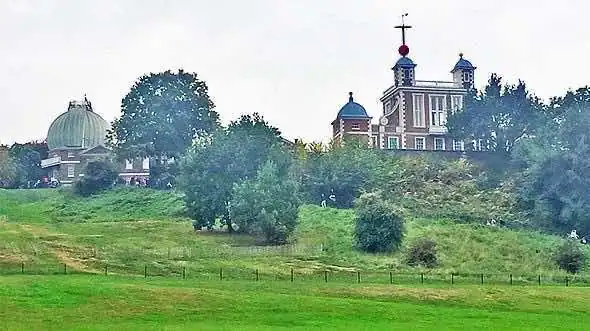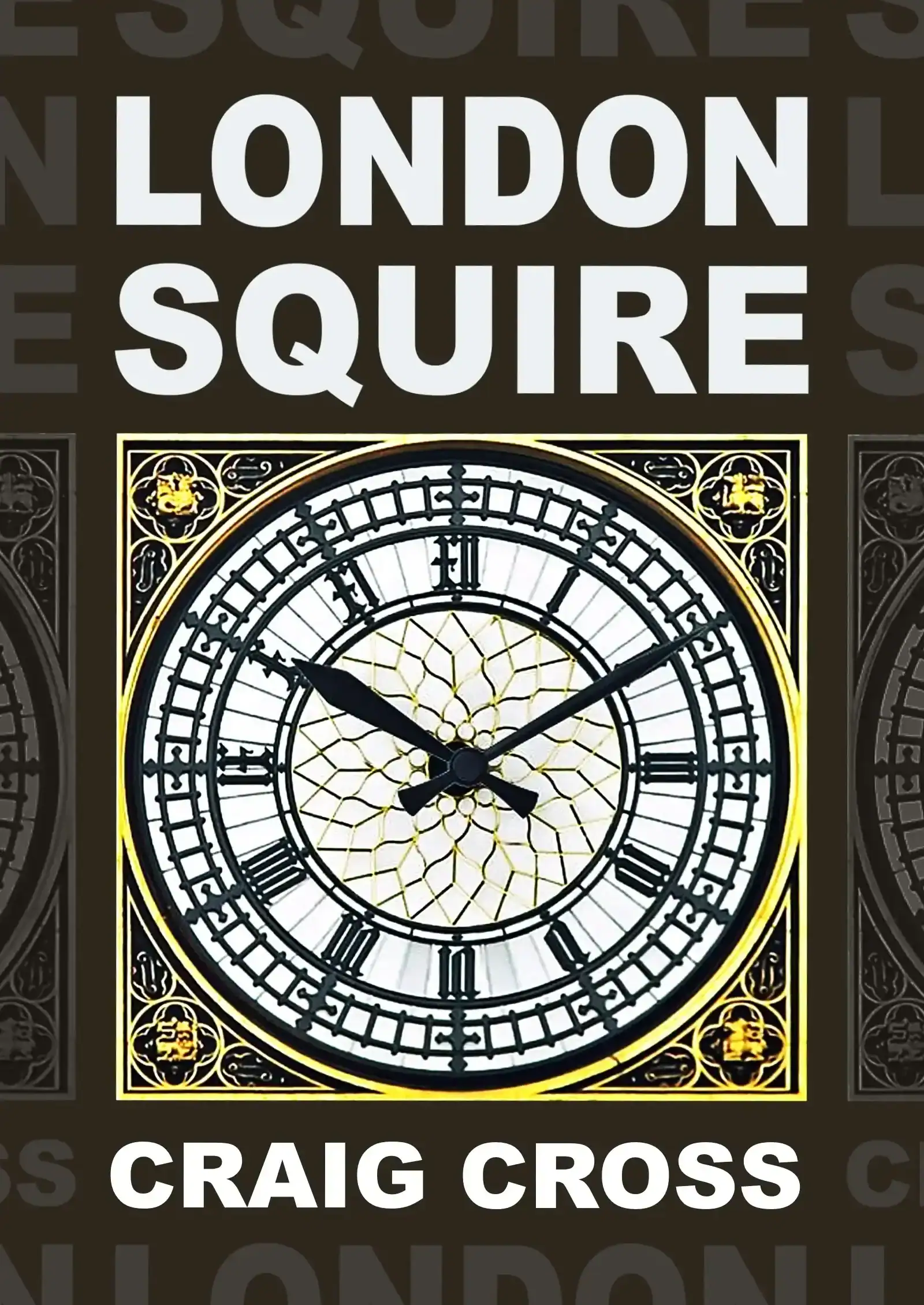
When Christopher Wren started work on the observatory it was overlooking the rubbled wreck of Greenwich Palace at the bottom of the hill. Queen’s House was still standing (it’s still standing today) but it was another twenty years before he built the Seaman’s Hospital (now called the Old Royal Naval College). So that fantastic view that we see today was just a big building site in 1675.
Greenwich Hill
I don’t suppose he bothered coming all the way out to Greenwich very often because he was still rebuilding the City after the Great Fire of London and he had another fifty-two churches and a cathedral on the go. Greenwich was a still rough ride on a muddy, rutted road in those days so after he’d been thoroughly shaken around for an hour he’d have stumbled his stiff legs down the stagecoach steps and seen the distant City from atop the hill. We can easily see the dome of St. Paul’s from here today so he must have seen the scaffolding going up, seen the dust clouds going up – that’s where I should be, over there!
Flamsteed House
The building that he’s responsible for at the Royal Observatory is the little red one – Flamsteed House. It was named after the first Astronomer Royal whose primary job it was to work out a way for sailors to find their longitude on the open sea. They eventually achieved the feat using a mixture of star charts, clocks and watches but it took them decades – you’ll learn all of this as you walk around the museum. But here’s a quick tip before you get going: buy yourself a ticket for the planetarium when you enter because the time-slots fill up quickly. The last time I was here I had to hang around for an hour at the end before I was able to sit down for a show.
Prime Meridian Line (Greenwich Mean Time)
Once you’re through the entrance you’ll find yourself standing on the forecourt by the famous Meridian line. This is the line that splits the world’s hemispheres in half. It will likely be heaving with people all tiptoeing down the middle of it while their buddies take a photo. They all think they’re straddling the centre of the world but alas, they are mistaken because there are actually four different Meridian lines – Edmond Halley had one, James Bradley had one (you’ll see all of the lines inside) – they each created their own one to fix the position of the stars on their charts. Unfortunately the shifting crust has inched the internationally accepted one 100 metres further east, so the true Meridian now lies somewhere on the hill.
The museum begins with a walk around the 17th-century house, which brings me to a quick little point if you’re bringing your kids… I don’t think parents quite realise how serious it all is. They turn up thinking it’s going to be full of spaceships and entertainment for their kids but it’s actually aimed more at the adults. A lot of the rooms still look like they did 250 years ago. You’ll be walking through pantries and parlours, past old paintings of the people who lived here, past the muffled tocks of grandfather clocks, and peering glass cabinets full of papers, portraits and handwritten letters. The highlight is the Octagon Room upstairs where they housed the original telescopes. They could do with putting a new telescope in the middle of it because it’s just an empty space now, just a few paintings and plaques to describe what you can no longer see.
Early clocks and telescopes exhibition
After that you’re into the modern museum full of historic clocks and chronometers. Some of Harrison’s clocks are practically works of art, managing to look both incredibly heavy and incredibly delicate at the same time. Once again it’s all aimed at the adults, and if you’re interested in how they eventually measured longitude then this is the perfect place to go.
To see the actual astronomy exhibits you have to find the forecourt again, walk out of the gate, and then head into the next courtyard along. This is where you’ll finally find some information about stars and planets. They’ve got a few darkened rooms with machines your kids can fiddle with but it’s not very big – you’ll literally be finished in thirty minutes flat (and probably not even that). It really is very small indeed. But luckily you’ve still got the best bit to come – the planetarium.
Royal Observatory’s Planetarium
You don’t have to worry about getting a dodgy seat because the entire show takes place above your head. It’s a bit like sitting inside a giant upturned teacup. You just sit back and relax in your recliner seat and stare straight up into the darkening dome.
My timings were a big tight today so I had to settle for the first show available, which unfortunately turned out to be a children’s one with shout-out answers for the audience, but they lay on a whole programme of shows ranging from fun to serious so you might want to check out the timings on their website first.
The images that fill the screen are much larger and more impressive than you might imagine… I was just expecting to see a lot of pinprick stars but you get pictures of the planets shooting out of the void and spinning and filling up the entire room. They had some great shots of the moon, and the Milky Way looked rather magical. But the highlight was when they made it seem like we were standing on the surface of Mars by filling up the entire horizon with real-life stills from NASA’s lander.
If you enjoy this then try Science Museum (take a tube journey from Greenwich to South Kensington). The best way of getting to Greenwich is by a sightseeing boat from Westminster Bridge. There are two companies that do it: City Cruises and TRS And whilst you’re visiting the Royal Observatory you can enjoy the view from the top of Greenwich Hill
 The author Craig Cross owns city-guide.london and has spent the last decade reviewing the capital’s landmarks, attractions and hotels. His guidebook London Squire is available from Amazon
The author Craig Cross owns city-guide.london and has spent the last decade reviewing the capital’s landmarks, attractions and hotels. His guidebook London Squire is available from Amazon
Your comments and questions
MikeP Is Oyster zones 1-2 okay to go to Royal Observatory from the city center? And which station?
Craig Hi Mike. That's okay, yes. I would catch a train to Cutty Sark and walk through Greenwich Park. The station is in zones 2&3, but if you're coming from the direction of zone 1 then it counts as zone 2, so the whole journey will be zones 1-2
Owen Hi, how far is the walk from the station to the planetarium
Craig Hi Owen. It's about a 15-20 min walk from Cutty Sark DLR, which includes the walk up Greenwich Hill
SP Can we just take our kids to see a planetarium show and not bother with the observatory museum because they'd rather visit the Cutty Sark instead
Craig Hi SP. You can do, yes. They sell the planetarium tickets separately from the observatory tickets, and there's a separate entrance as well. But then you won't be able to get into the meridian courtyard
Leave a comment